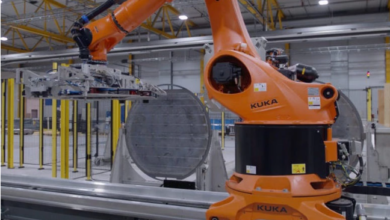SoCalGas commissions Carbon-Negative Waste-to-Energy Technology
Kore's modular system diverts organic waste from California landfills and converts it into carbon negative hydrogen and renewable natural gas (RNG).

Southern California Gas Co. (SoCalGas) announced that Kore Infrastructure has successfully begun testing and demonstrating its carbon-negative, waste-to-energy modular system at the utility’s Los Angeles facility.
The innovative technology is designed to divert organic waste from California landfills and convert it into carbon-negative hydrogen and renewable natural gas (RNG). These clean fuels could be used to reduce greenhouse gas emissions from industrial processes and hard-to-electrify sectors, including heavy-duty transportation. SoCalGas is already demonstrating how renewable hydrogen made from RNG could fuel a public transportation fleet.
Testing of the Kore Infrastructure technology can provide key insights into the efficiency and operating costs, as well as determine the cost-effectiveness of its deployment at scale. SoCalGas contributed $1.5 million to the demonstration project, which has also received funding from the South Coast Air Quality Management District (South Coast AQMD).
Kore’s modular system uses a proprietary pyrolysis process, which heats organic waste under high temperatures in a zero-oxygen environment, converting the waste to a blend of gases that could be converted to carbon-negative hydrogen or RNG, along with a solid carbon char that can be used to enhance soil quality or help decarbonize cement and steel production. Kore Infrastructure’s process is designed to meet South Coast AQMD’s ultra-low NOx and particulate emissions standards.
“This is the type of novel approach that we need to see more of that uses sustainable processes,” said Ben J. Benoit, Chair of the South Coast AQMD Governing Board. “Not only will it divert material from landfills, but the process will create clean energy sources that can be used in fuel cell vehicles and other clean-air technologies.”
“In California, transportation causes approximately 40% of greenhouse gas emissions,” said Cornelius Shields, CEO and founder of Kore Infrastructure. “We’re collaborating with waste, energy, and transportation sector leaders to provide a Made-in-America, carbon-negative energy solution. Our UltraGreen™ hydrogen will be the fuel of the future for light-duty vehicles, heavy-duty trucks, and buses, ensuring our supply chain is emissions-free, sustainable, and affordable.”
“SoCalGas will continue to support companies developing innovative technologies to help achieve carbon neutrality,” said Neil Navin, vice president of clean energy innovations for SoCalGas. “The production of carbon-negative RNG and hydrogen could help provide energy security and decarbonize California in our energy transition.”
Kore plans to demonstrate the production of 99.999% pure hydrogen that would be suitable for fuel cell electric cars, trucks, buses, and trains by the third quarter of 2022. The demonstration facility has the potential to process up to 24 tons per day of organic feedstock and produce up to one metric ton of carbon-negative, UltraGreen hydrogen™ per day, enough hydrogen for over 1,400 fuel cell electric cars.
This demonstration project could also help California cut methane emissions from landfills under CA Senate Bill 1383 by converting organic waste into carbon-negative renewable fuel. SoCalGas research has shown that clean fuels like hydrogen and RNG can deliver the most affordable, resilient, and technologically proven path to full carbon neutrality.
SoCalGas has more than 10 active hydrogen pilot projects. Last year, SoCalGas submitted several research and development initiatives to the U.S. Department of Energy’s (DOE) Earthshot Hydrogen Program’s Request for Information (RFI), which is designed to accelerate and enable low-cost clean hydrogen, create jobs, and facilitate a net-zero carbon emissions economy by 2050.
Last year, SoCalGas announced its aspiration to achieve net zero greenhouse gas emissions in its operations and the energy it delivers by 2045 and earlier this year released its ASPIRE 2045 Sustainability Strategy to help reach that goal.
